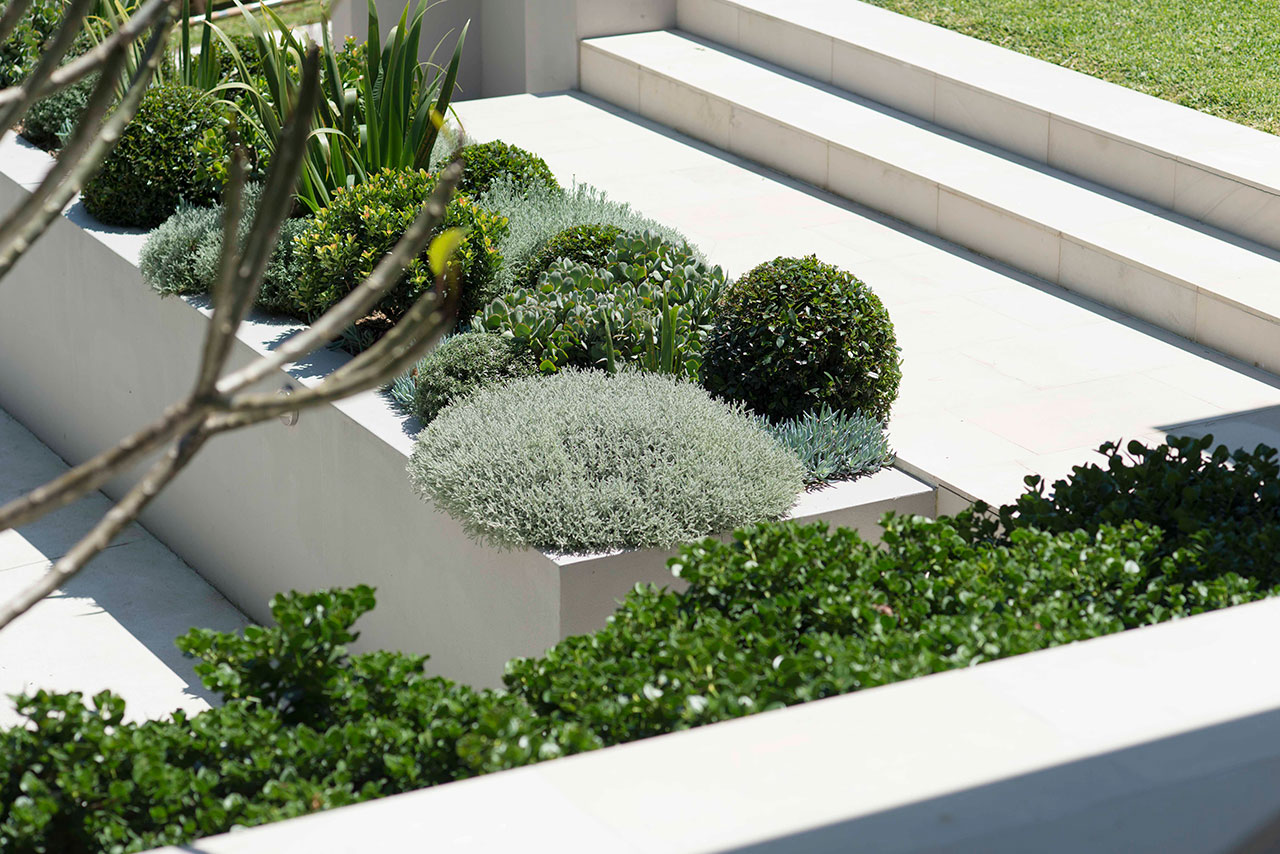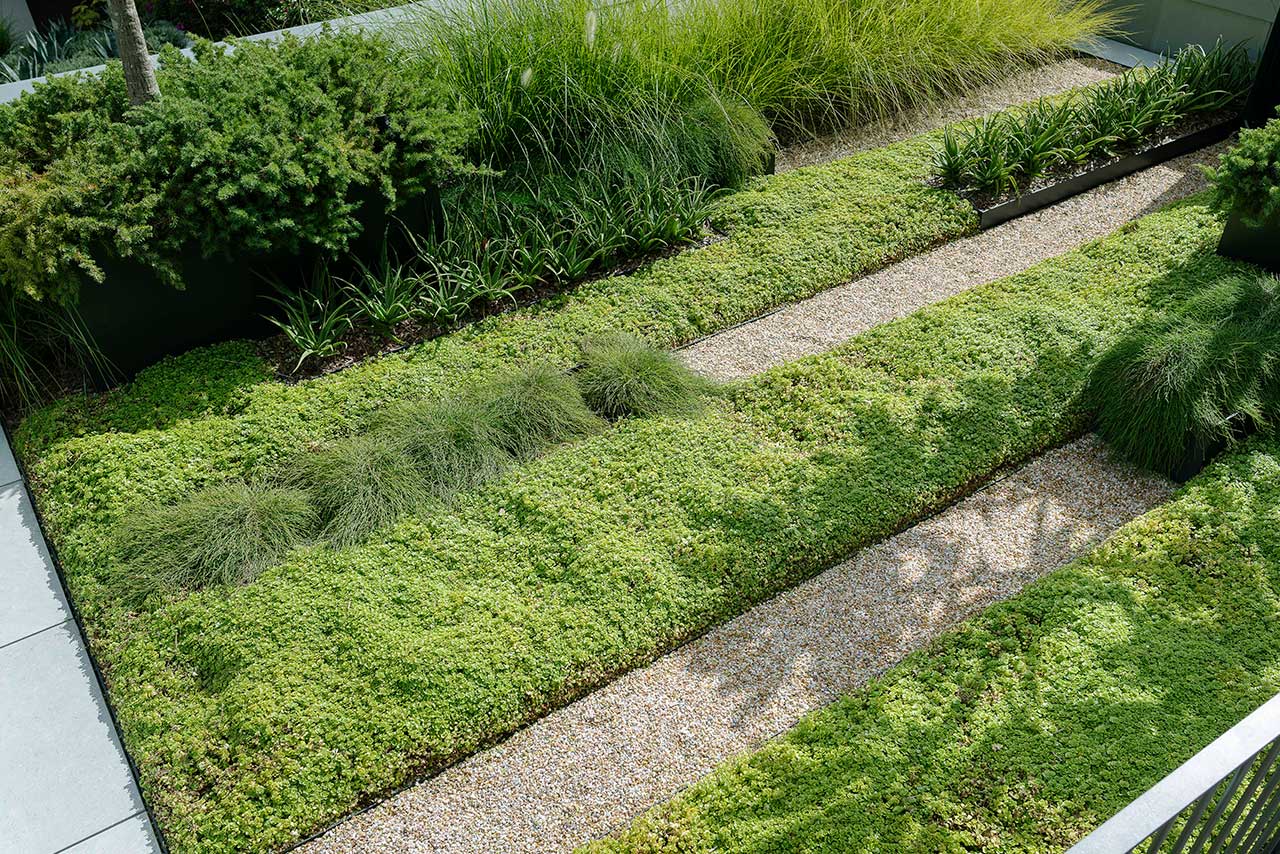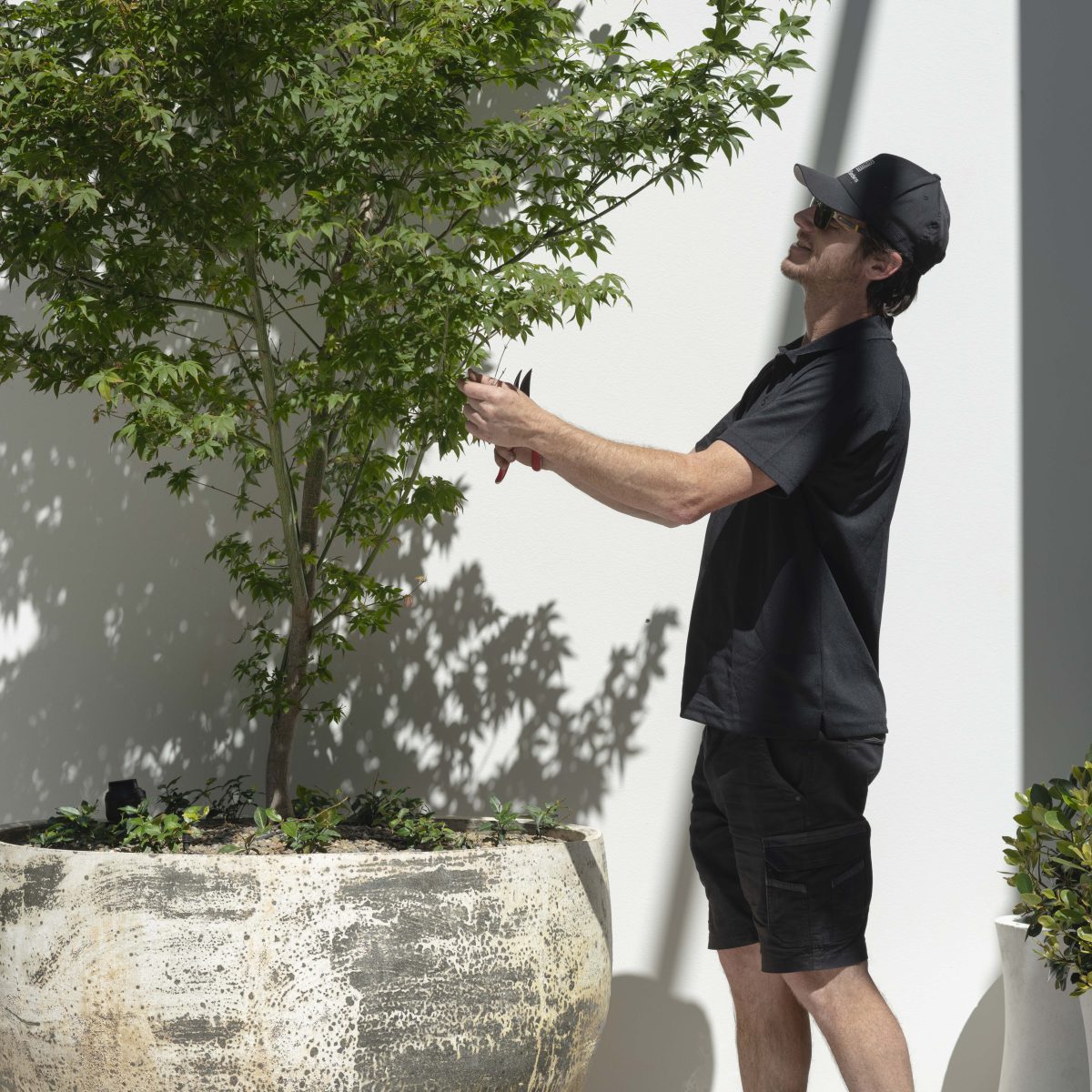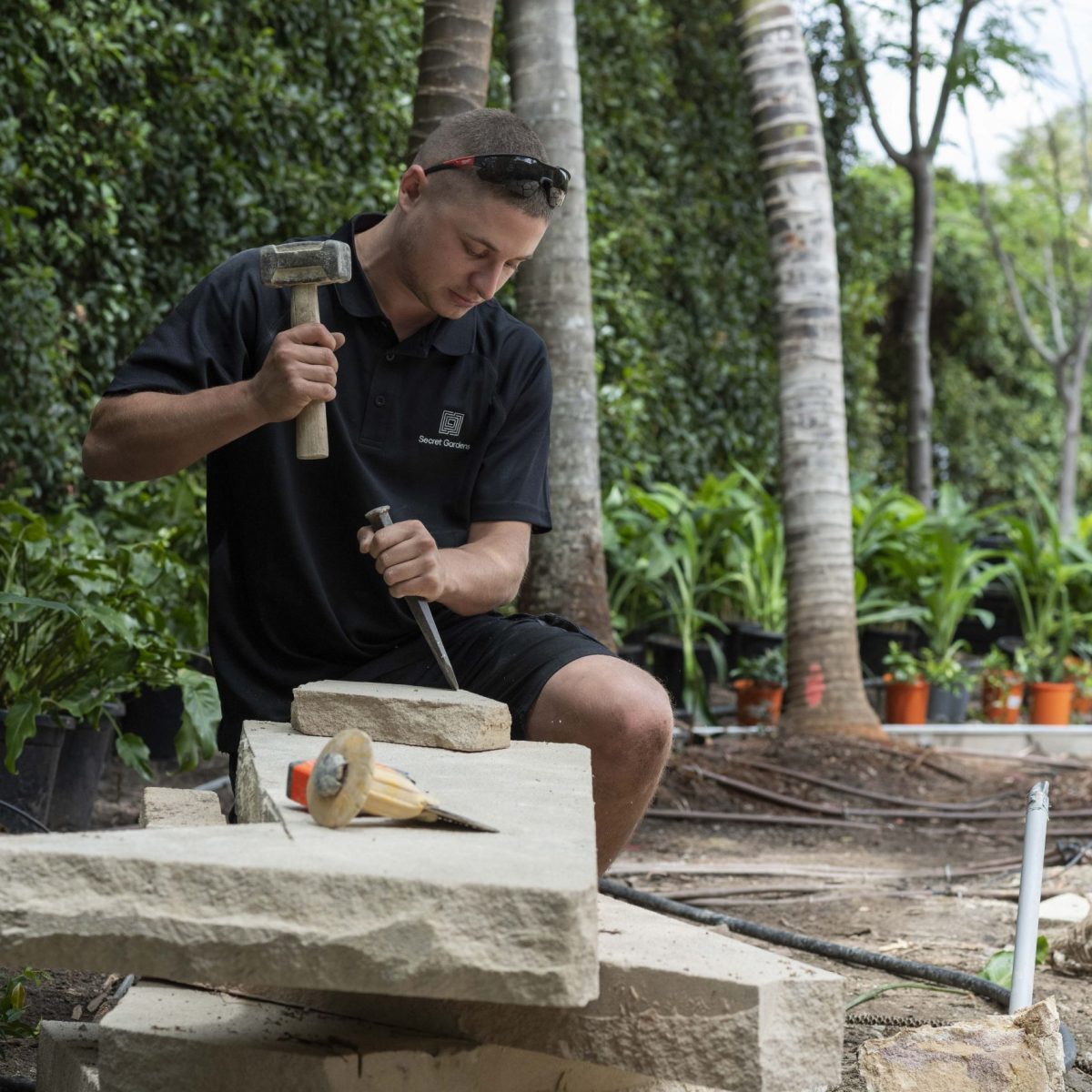Textural contrast
Using texture in the garden is primarily about creating a balance of hard and soft surfaces, meaning structural elements and hard materials like steel and stone, juxtaposed with softer features – most obviously soft foliage.
Texture becomes a multi-sensory experience; rough and raw textures are amplified by contrast with sleek surfaces or feathery foliage, inviting one to touch, but also to look more closely and to visually read the way that shadows play on the differing materials.
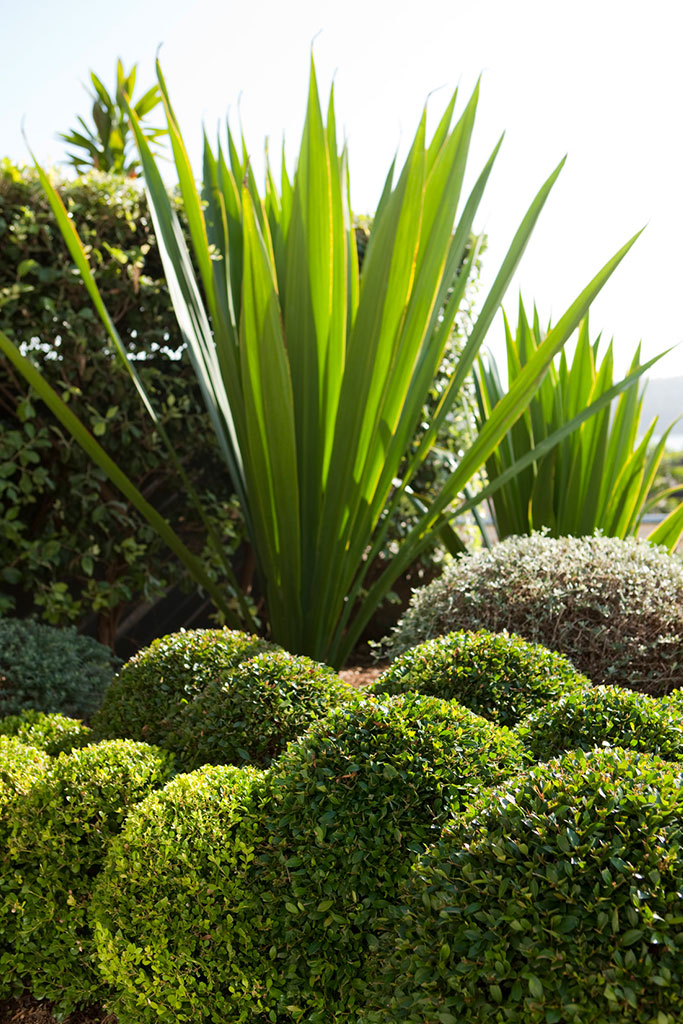
Hard surfaces
When choosing materials based on texture, there are a wealth of options, depending on the mood you want to create in the garden. We often use steel (powder-coated black or rustic-looking corten, depending on the style of the design) which introduces a clean, modern look to a garden – but, again, it’s all about contrast and a balanced scheme will always have more elements working to create a cohesive whole.
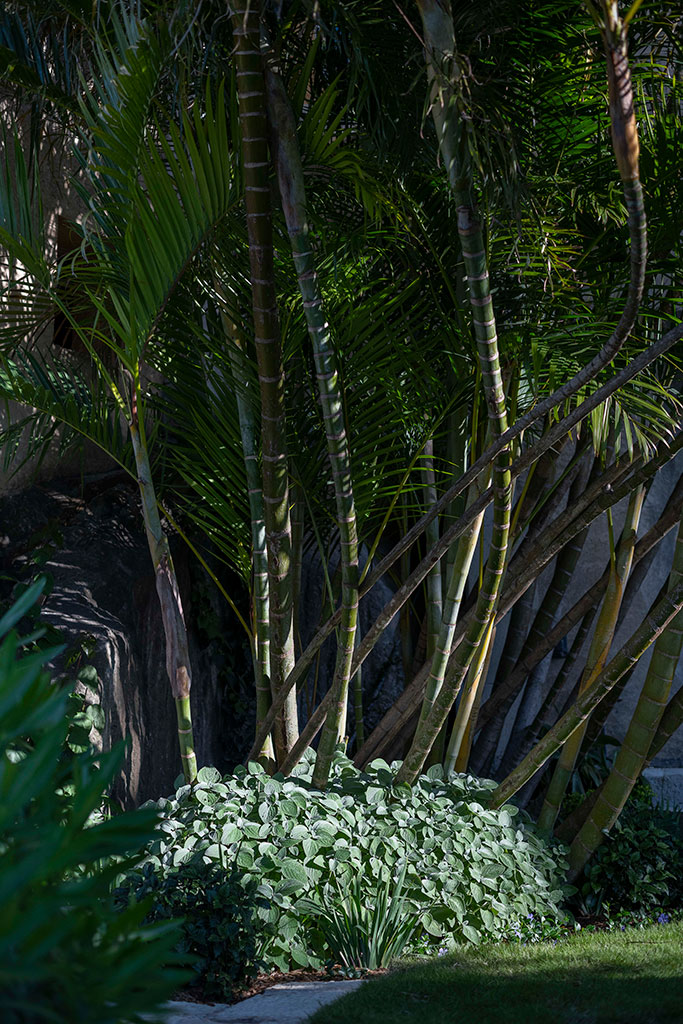
Multiple materials are married together for a multi-dimensional, but cohesive look – lawn might be paired with deco granite or gravel, and a stone-clad wall or bench for a rustic feel; or rough-sawn timber might provide a raw earthiness to take the edge of a scheme of concrete and hard angles.
Furnishings also play their part. We’ll often choose timber furniture to provide warmth to a hard tiled surface; or we might dress a timber deck with a modern powder-coated setting, piled with soft cushions – the contrasting textures are what keeps the look interesting and draws you in.
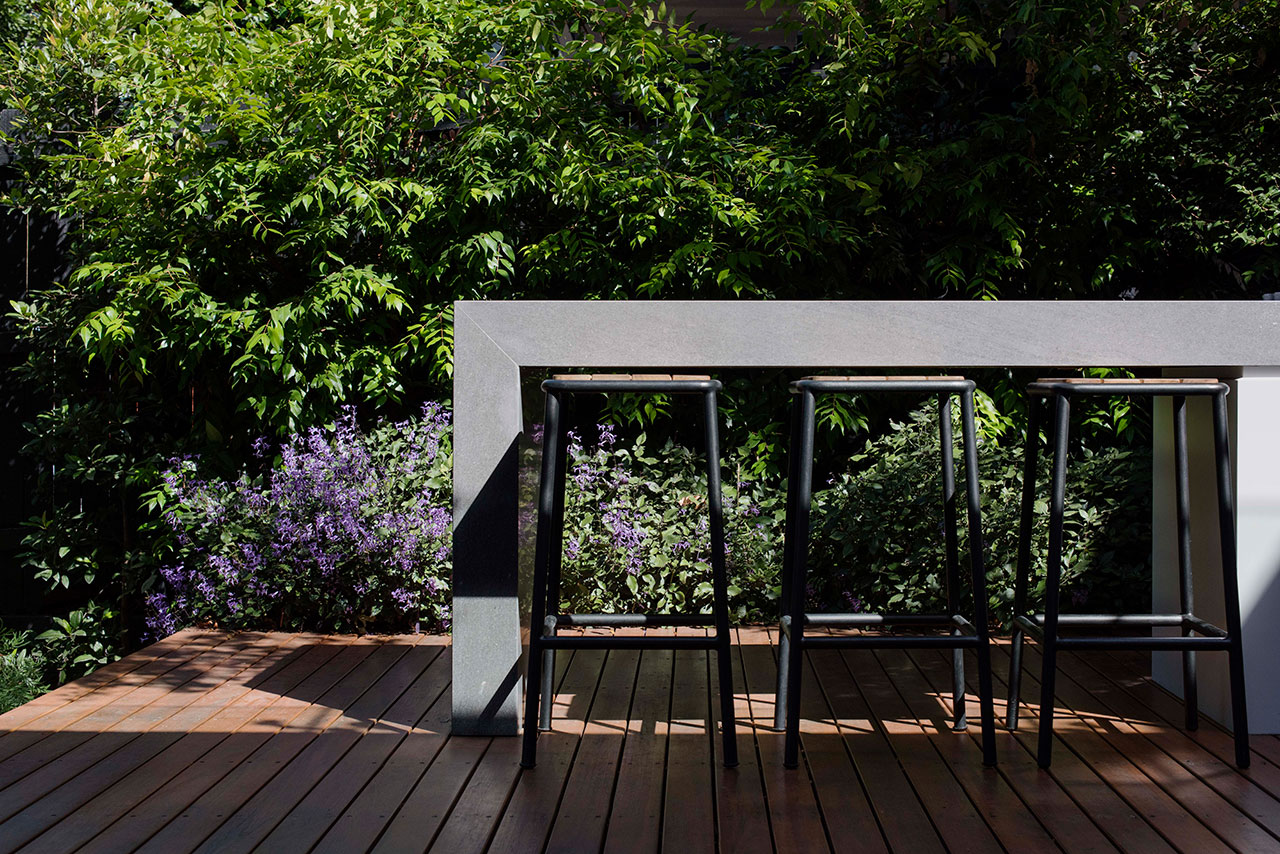
Texture plants
When we’re talking about texture in terms of plants, we discuss visual texture and physical texture. Plants with visual texture range from boldly architectural plants with strong shapes to loose, blousy shrubs – ideally we’d introduce contrast with a combination of the two.
Physical texture refers to spikes and thorns, at one end of the spectrum, and at the other, beautifully touchable foliage – soft, velvety plants, like Strobilanthes gossypinus (pewter plant or Persian shield), or bushy grasses with fluffy flower heads. These touchable plants can be grouped together – perhaps combined with edible or very fragrant plants – to create a sensory garden, a space that draws you in to touch, pick, taste, smell and thoroughly experience the garden.
